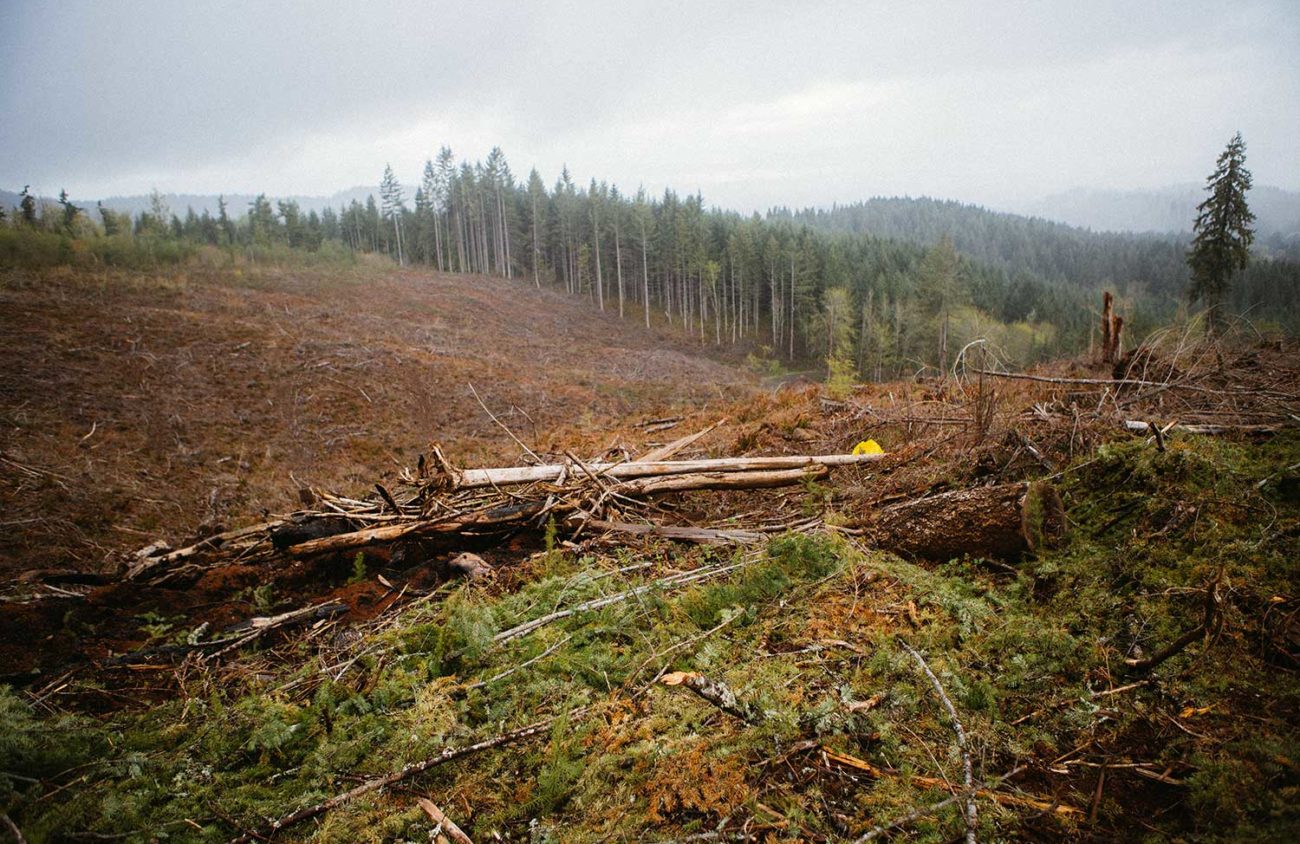The U.S. Forest Service ended 2022 with a decision that local environmentalists are celebrating.
The federal agency decided to withdraw its plans for the Flat Country timber sale, which would have affected some more than 100-year-old trees in a nearly 75,000 acre project area in the Willamette National Forest near McKenzie Bridge.
The USFS says its proposal was withdrawn because of a 2021 Biden administration executive order, and it will announce a new plan this spring that doesn’t harvest mature trees. Cascadia Wildlands, one of many environmental groups that opposed the plan, applauds the agency’s move, saying that old-growth trees should be protected as climate defense.
“It’s definitely good news,” says Cascadia Wildlands Conservation Director Bethany Cotton. “But what remains to be seen is how reasonable the new proposal will be.And our hope is that they will drop all of the old growth and older forest clearcutting that was authorized in the initial proposal.”
On Dec. 20, 2022, the USFS announced it was withdrawing its initial proposal for Flat Country. The federal agency cited an expert panel that recommended sustainable and climate-adapted timber plans. The original Flat Country plan was first proposed in 2018, and on Jan. 21, 2021, the agency had moved forward with it after a public comment period.
The initial Flat Country proposal had several goals, according to USFS documents. The first was to provide a sustainable supply of timber. The second was to thin the forest, which the USFS said was too dense. The third was to increase habitat complexity. And the fourth was to manage forest road systems in the project area.
Within the boundaries of the 74,063-acre project, the agency proposed forest management actions on 5,001 acres. This included 4,039 acres of forest thinning, 767 of which were on riparian reserves, which are bodies of water or waterways and some of the areas around them, and 962 acres of regeneration harvests. What the Forest Service calls a regeneration harvest, environmental groups call a clearcut. The project would have harvested trees in the age range of 27 to 150 years old.
But a Biden administration’s Earth Day 2022 executive order was a major factor in altering the USFS’s plans, says USFS spokesperson Jon McMillan.
Biden’s “Order on Strengthening the Nation’s Forests, Communities and Local Economies,” signed April 22, 2022, placed emphasis on pursuing science-based, sustainable forest and land management and conserving the country’s “mature and old-growth forests” on federal lands.
Cotton says the Flat Country sale was “the absolute poster child, possibly the worst example nationwide” where the Biden administration was saying the right thing about protecting old forests and climate resilience while Pacific Northwest rangers were “continuing to crank out timber sales in old-growth” forests. “There’s just this huge disconnect there,” she adds.
During the summer of 2022, the regional forester brought together a panel of experts to look at the Flat Country environmental impact statement in context with the Biden administration’s executive order, McMillan says.
Although the Flat Country project didn’t violate the Northwest Forest Plan, a nearly 30-year-old policy guideline for managing federal lands in the region, the agency decided to withdraw the plan until it learns more about the Biden administration’s executive order.
McMillan is careful to say that trees in the Flat Country proposed site didn’t include old-growth trees; rather, he says that they are mature trees with old-growth characteristics. “The mature stands that were in there, that’s a relatively small piece of that project,” McMillan says. “If we can separate that from the project, we can move forward.”
The original plan’s output of timber would have been around 102 million board feet, McMillan says, but it’s too soon to estimate the number of board feet harvested in the next plan. The agency’s priority is still reducing fuel loads, thinning and providing timber for mills, he says.
The plan was unpopular with environmentalists and environmental groups, Cotton says. In the past few years, she says hundreds to thousands of people were involved in opposition campaigns to the proposal, staging letter campaigns and a protest float down the McKenzie River. Protesters with the direct action group Cascadia Forest Defenders also had a two-week tree-sit in the Willamette National Forest in September 2021.
The initial plan did not take into consideration the impacts of the recent fires from 2020 to present, post-fire logging or any since then or the effects on the northern spotted owl habitats, Cotton says.
Cotton says the public outcry over the initial plan had a role in USFS deciding to re-examine the sale. The timber sale’s plan included trees within the McKenzie River headwaters, which prompted residents in that community and people downriver to get involved in fighting the plan, she says.
McMillan says USFS is going to try and gain popular consensus with its next Flat Country plan.
Biden’s executive order was a major factor in the withdrawal of the Flat Country project, but McMillan says a change in the White House in 2024 wouldn’t mean that the previous proposal would return. If a project is withdrawn, it won’t come back, he says.
Cotton says Biden’s executive order doesn’t stop agencies from cutting down old-growth forests but requires them to recognize the value of the trees. And as climate change worsens over the next few years, which scientists say the planet is nearing a point of no return, Cotton says old-growth trees need to be protected.
“Our greatest climate defense in this region are our mature and old-growth forests,” Cotton says. “They are much more resilient to wildfires. They’re seed banks. They’re core habitat for threatened and endangered species. And they also protect our drinking water sources.”
